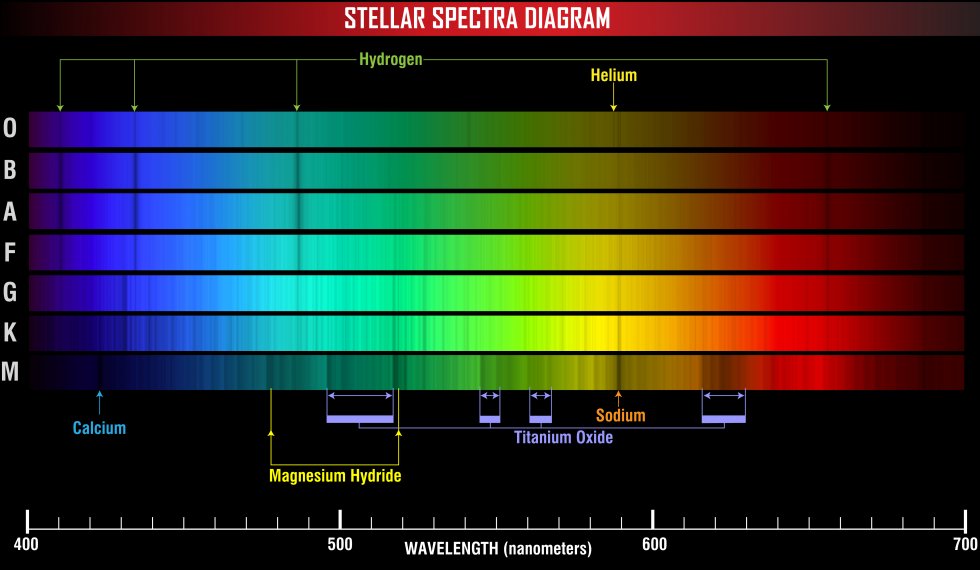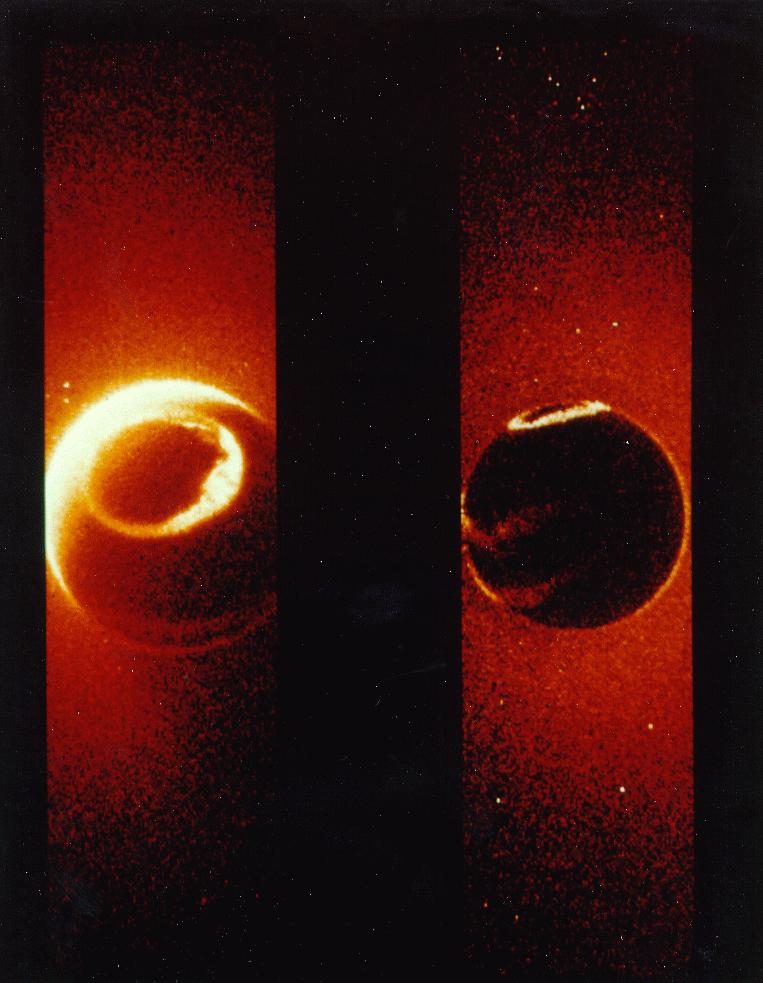saturn2 wrote:What is hidrogen alpha?
Hydrogen alpha is red light whose wavelength is 656 nanometers. The interesting thing is how it is produced. It takes hydrogen being hit by ultraviolet photons to produce it.
It works like this. A hydrogen atom consists of one proton and one electron. The electron is in orbit around the proton, although it must be said that "orbit" doesn't mean the same thing when we talk about subatomic particles as when we talk about planets orbiting a sun. The electron is moving around in a much more unpredictable way than a planet orbiting a sun.
Anyway, the electron is moving around in an "electron shell". Inside this shell, the electron has a certain energy. There are several electron shells, but the electron tries to stay in the lowest shell, where its energy is the lowest.
But if the electron is hit by an ultraviolet photon, it will be "kicked" into a higher electron shell. In the case of the so-called Balmer series" (and you don't have to worry about what exactly that is) the second shell represents an "extra energy" comparable to a photon of the wavelength of 656 nanometers.
When the electron has been "kicked" into this second shell by an ultraviolet photon, it will want to "fall down" again. As it does so, the electron emits a photon of the wavelength of 656 nanometers.
656 nanometers represent red light. In other words, if a photon has been kicked into the second shell of the Balmer series, it will release its extra energy as a photon of 656 nm red light, so that it can fall down into its lowest electron shell again.
Here you can see the Balmer series. The lowest shell is shell number 2 (and no, I can't explain why it's called 2 and not 1). If the electron is kicked into shell number 3, it will emit red light as it falls down. If it is kicked into shell number 4 it will emit blue-green light as it falls down. (This picture says that the electron will emit pure green light, but that is not true.) If the electron is kicked into shell number 5, it will emit blue light as it falls down, and if it is kicked into shells number 6 and 7 it will emit violet light. Electrons are often kicked "one shell up", but it is a rare event indeed that they are kicked more than "two shells up". Therefore electrons often emit red light, but extremely rarely violet light.
Here you can see the colors of the Balmer series. These are the colors that can be emitted by an electron as it is falling down from a higher shell into shell number 2.
This is the Rosette Nebula. It is glowing red because huge numbers of electrons are emitting red light. These electrons have been kicked into shell number 3 by ultraviolet photons from the hot stars at the center of the Rosette nebula. As the electrons fall down into shell number 2 again, they emit red light of 656 nanometers. As long as the stars stay hot and bright, and as long as there is a large cloud of hydrogen surrounding the hot stars, electrons will keep being kicked into shell number 3, and they will keep emitting red light as they fall down into shell number 2.
Ann
 NGC 1579: Trifid of the North
NGC 1579: Trifid of the North





